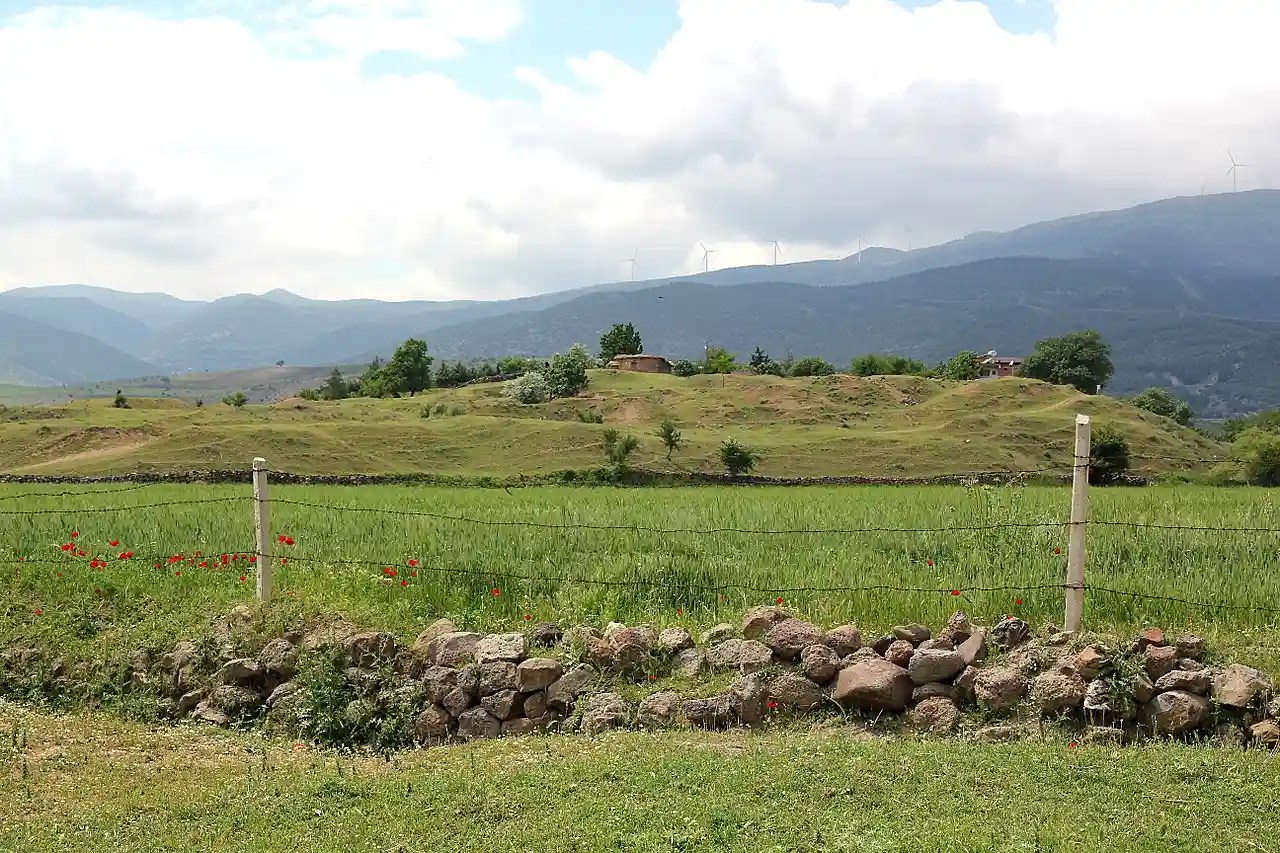 Zincirli Höyük - Credit: Wikimedia Commons
Zincirli Höyük - Credit: Wikimedia Commons
 Zincirli Höyük - Credit: Wikimedia Commons
Zincirli Höyük - Credit: Wikimedia Commons
Sam'al (Zincirli Höyük), is an archaeological site located in the Anti-Taurus Mountains of modern Turkey's Gaziantep Province. During its time under the control of the Neo-Assyrian Empire (c. 700 BC) it was called, by them, Sam'al.Miller, Robert D., "The Barrakab Inscription", Covenant and Grace in the Old Testament: Assyrian Propaganda and Israelite Faith, Piscataway, NJ, USA: Gorgias Press, pp. 49-76, 2012Giusfredi, Federico, and Valerio Pisaniello, "The population, the language and the history of Yadiya/Sam’al", Beyond All Boundaries. Anatolia in the 1st Millennium BC (Orbis Biblicus et Orientalis 295), Peeters, pp. 189-223, 2021 It was founded at least as far back as the Early Bronze Age and thrived between 3000 and 2000 BC, and on the highest part of the upper mound was found a walled citadel of the Middle Bronze Age (ca. 2000–1600 BC).Chicago-Tubingen Expedition to Zincirli, (2018). "Site and Setting", The University of Chicago. New excavations revealed a monumental complex in the Middle Bronze Age II (ca. 1800–1700 BC), and another structure (Complex DD) that was destroyed in the mid to late 17th century BC, maybe by Hititte king Hattusili I.Herrmann, Virginia, et al., (2020). "Iron Age Urbanization and Middle Bronze Age Networks at Zincirli Höyük: Recent Results from the Chicago-Tübingen Excavations", in ASOR 2020 Annual Meeting. This event was recently radiocarbon-dated to sometime between 1632 and 1610 BC,Herrman et al., (2023). "New evidence for Middle Bronze Age chronology from the Syro-Anatolian frontier", in: Antiquity, Volume 97, Issue 391, February 2023, p. 2: "....Here, we present evidence for the absolute and relative chronology of a late Middle Bronze Age (MB) II destruction event at Zincirli (Türkiye), a site on the border between the Syrian and Anatolian spheres. The destruction is dated with unusual precision by 11 short-lived radiocarbon samples from closed contexts, and the assemblage of pottery found therein affords key synchronisms with final Middle Bronze Age strata at other sites in the Northern Levant, Cilicia and Anatolia..." during the late Middle Bronze Age II (ca. 1700–1600 BC).Herrman et al., (2023). "New evidence for Middle Bronze Age chronology from the Syro-Anatolian frontier", in: Antiquity, Volume 97, Issue 391, February 2023, pp. 5–6: "...The assemblage of complete vessels from Zincirli Area 2 allows comparison with late MB II sites across the Northern Levant and Cilicia...[and] comparisons with the final MB II repertoires at Tilmen Höyük (Levels IIb–c), Alalakh (Level VII), Ebla (Mardikh IIIB2), Kinet Höyük (Period 16), Umm el-Marra (Period IIIa–c), Zeytinli Bahçe Höyük (Building VII) and Lidar Höyük (Phase 5/Level 8)..." The site was thought to have been abandoned during the Hittite and Mitanni periods, but excavations in 2021 season showed evidence of occupation during the Late Bronze Age in Hittite times (ca. 1600–1180 BC).Herrmann, Virginia R., et al., (2022). "Comparing Bronze and Iron Age Urbanism, Economy, and Environment in Zincirli, Turkey: Results from the 2021 Excavation", 2022 ASOR Annual Meeting, Abstract Booklet, Boston, November 16–19, p. 88: "Among the discoveries this season was the first evidence of occupation at Zincirli during the Late Bronze Age under Hittite hegemony." It flourished again in the Iron Age, initially under Luwian-speaking Neo-Hittites, and by 920 B.C. had become a kingdom. In the 9th and 8th century BC it came under control of the Neo-Assyrian Empire and by the 7th century BC had become a directly ruled Assyrian province. Read more on Wikipedia
Source: en.wikipedia.org